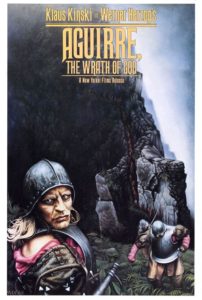 Aguirre, the Wrath of God is a West German-Mexican-Peruvian historical drama. It was directed by Werner Herzog, a German director, in the year 1972. The story takes place in 16th-century Peru. In the beginning the camera pans over a beautiful view of the Andes mountains. On those mountains was a large group of Spanish conquistadors on their mission to find the mythical city El Dorado. The travelers believed that El Dorado was a city with massive amounts of gold and that they could conquer it. After some time the men decided that they would create a group of 40 men that would go off on their own expedition. They were given one week to find more information on El Dorado or the natives living in the jungle or that they would be presumed dead.
Aguirre, the Wrath of God is a West German-Mexican-Peruvian historical drama. It was directed by Werner Herzog, a German director, in the year 1972. The story takes place in 16th-century Peru. In the beginning the camera pans over a beautiful view of the Andes mountains. On those mountains was a large group of Spanish conquistadors on their mission to find the mythical city El Dorado. The travelers believed that El Dorado was a city with massive amounts of gold and that they could conquer it. After some time the men decided that they would create a group of 40 men that would go off on their own expedition. They were given one week to find more information on El Dorado or the natives living in the jungle or that they would be presumed dead.
The story of Aguirre, the Wrath of God is one of dictatorship, greed, and obsession. The main character Aguirre (Klaus Kinski) initiated an uprising against the leader of the smaller group of men. The original leader deemed their mission to be fruitless and that they should head back. Aguirre, however, was so wildly consumed with the idea of finding untold riches that he ranted about all the power the men could have if they were to find El Dorado. He even referenced Hernando Cortes, the well known Spanish conqueror of Mexico in 1519. He told the group that Cortes had directly disobeyed orders to cancel his expedition and that he ended up being the ruler of Mexico. He then had someone shoot the original leader to instill fear into anyone that tried to suggest that they cancel their expedition. As the men continued on their way to find El Dorado they come across many more problems such as illness and even cannibalistic natives that are following them along in the jungle.
During the film there is a man narrating as if he’s reading diary entries, which I found to be helpful because it gave an insider’s perspective to the group we’re watching. The entire film was done with just one handheld camera which gave a lot of scenes a very shaky look. The shots were often very blurry as well from rain or splashing water while the actors were in rafts on the river. The handheld camera allowed for more free range of movement as the entire film was shot in the actual jungle. The actors spend their time primarily on rafts traveling down the river so it was necessary to use a camera that was easily mobile. Herzog also had the film shot in sequence in an attempt to “convey the increasing desperation of the film’s scenario” (Deep Focus Review).
I found the story behind the production to be the most fascinating part of the whole movie. The lengths that the director and actors were willing to go to film this movie was borderline insane. The entire crew had to go to extreme lengths by hiking up a mountain near Manchu Picchu. The crew consisted of about 450 people as well as animals like horses, pigs, and llamas. The weather was decently poor during their trek. The opening scene you can see the thick layer of fog that rolls about the mountain while they climb. They eventually reached an altitude of 14,000 feet and were walking along a cliff side with a 2,000 foot drop. They were at a point where even the natives of the area were getting altitude sickness (Deep Focus Review). The actors also had to deal with poverty like living conditions because the budget for the film was only $370,000. At one point their campsite flooded and Herzog wouldn’t allow them to move locations because he was so obsessed with the film being exactly a certain way. So instead they had some locals build large rafts and they continued on with the production while living on those.
Herzog also put his actors lives at risk with the shots he was demanding. For example, the rapids he chose to film in were so strong that during pre-production when he put a raft in the water it immediately ripped it in half. When that happened the actors had to be pulled through the rushing water with ropes to bring them back to shore. Instead of finding a safer setting to film in he hired some local natives to make a stronger raft and said that they would do it in just one shot. Later in the film there’s a scene where Aguirre is talking to monkeys. Herzog had locals round up about a hundred monkeys and just unleashed them on the scene. This led to Herzog, as well as other crew members, being attacked by the monkeys and having to endure it in order to get the perfect shot.
I think the most intense part of the production was that halfway through the production Herzog had shipped footage to Mexico to be processed but it was reported to be lost in transit. This meant that everything they had completed so far was lost forever and they had no means to continue filming. Herzog was so obsessed with finishing the film, however, that he didn’t tell anyone about the lost tapes and continued on with the production. By the power of some unknown miracle he was contacted a few weeks later and was told that the lost films were actually found in some customs office in Peru so they were able to piece them together for the whole film. I just think that Herzog’s level of dedication to this dangerous production really paralleled with Aguirre’s obsession with finding El Dorado at all costs. Of course Aguirre’s story is much more dark and filled with death, but you get the idea.
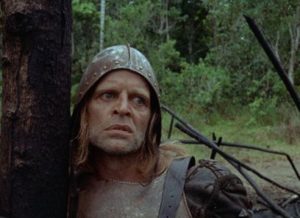 Another interesting aspect to the production was the main actor Klaus Kinski. Herzog had “described his relationship with Kinski as two oppositional forces of Nature that when joined reach a critical mass” (Deep Focus Review). Kinski’s overbearing nature is actually what landed him the part. Before playing in Aguirre, the Wrath of God Kinski played a theatrical Jesus on tour. He would basically stand on a stage with a microphone and rant about how he was Jesus and he would insult the audience who would then insult him back. While he was on the set of Aguirre, the Wrath of God he wasn’t much better. It was reported that one night he was upset about some locals being “too noisy” in their tent so he took his rifle and fired off three shots into the tent. One man was shot in the hand and almost lost his finger but thankfully nobody was killed. Kinski didn’t get in much trouble for his actions, Herzog just took away his rifle. It might seem like a crazy light punishment but it seemed Herzog was a bit crazy as well. Kinski had finally threatened to leave the production altogether and Herzog responded by saying that “the film was more important than either of them—and that if Kinski tried to leave, Herzog would get his rifle and put eight of the nine rounds into Kinski’s head, and then save the last one for himself” (Deep Focus Review) so as you can see both the heads of the production were quite unstable.
Another interesting aspect to the production was the main actor Klaus Kinski. Herzog had “described his relationship with Kinski as two oppositional forces of Nature that when joined reach a critical mass” (Deep Focus Review). Kinski’s overbearing nature is actually what landed him the part. Before playing in Aguirre, the Wrath of God Kinski played a theatrical Jesus on tour. He would basically stand on a stage with a microphone and rant about how he was Jesus and he would insult the audience who would then insult him back. While he was on the set of Aguirre, the Wrath of God he wasn’t much better. It was reported that one night he was upset about some locals being “too noisy” in their tent so he took his rifle and fired off three shots into the tent. One man was shot in the hand and almost lost his finger but thankfully nobody was killed. Kinski didn’t get in much trouble for his actions, Herzog just took away his rifle. It might seem like a crazy light punishment but it seemed Herzog was a bit crazy as well. Kinski had finally threatened to leave the production altogether and Herzog responded by saying that “the film was more important than either of them—and that if Kinski tried to leave, Herzog would get his rifle and put eight of the nine rounds into Kinski’s head, and then save the last one for himself” (Deep Focus Review) so as you can see both the heads of the production were quite unstable.
The film had pretty basic special effects due to their low budget. They had 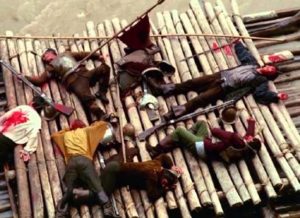 real explosions but when it came to things like blood it was very obviously bright red paint being splattered. One element focused on heavily in the film is noise. Almost the entire film there’s constant chattering of animals in the jungle or the rushing water in the rapids beneath them. Occasionally Herzog would cut all of the noise and make everything disturbingly silent. This was to make the viewers uncomfortable, like the characters were in the movie, because it always followed with a wild attack from the cannibalistic natives hiding in the jungle.
real explosions but when it came to things like blood it was very obviously bright red paint being splattered. One element focused on heavily in the film is noise. Almost the entire film there’s constant chattering of animals in the jungle or the rushing water in the rapids beneath them. Occasionally Herzog would cut all of the noise and make everything disturbingly silent. This was to make the viewers uncomfortable, like the characters were in the movie, because it always followed with a wild attack from the cannibalistic natives hiding in the jungle.
http://www.criticalcommons.org/Members/m_friers/clips/internal-rhythm-aguirre-character-movement-wide/view
http://www.philfilms.utm.edu/1/aguirre.htm
https://deepfocusreview.com/definitives/aguirre-the-wrath-of-god/

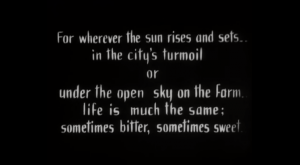

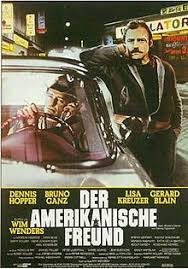
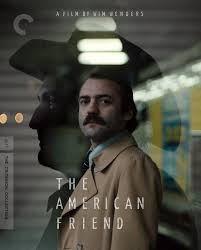
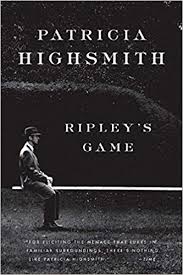 it was called Ripley’s Game. The movie itself is about a man named Tom Ripley. Ripley is a very wealthy American living in Germany. Ripley makes a living by scamming people at auctions for fake art. His partner would bring out some forged paintings and Ripley would be in the crowd raising the price in the auction. While doing his usual scheme he meets a very sick man named Jonathon Zimmermann. Zimmermann is a picture framer and doesn’t have much respect for Ripley. The movie goes on to tell a twisted tale of Ripley making Zimmermann believe that he’s far more ill than he really is. He even went so far as to forge medical results to make Zimmermann desperate and more open to living a life of crime. Zimmermann is actually unaware of Ripley’s part in falsifying his medical records and forms a kind of bond with him. This leads to Ripley protecting Zimmermann in a way from a gangster that wants to use him in a murder. Zimmermann begins to think that the mafia wants to kill him so him and Ripley set up in his mansion to wait for their attackers. Zimmermann and Ripley kill their almost-assassins and then load their bodies up into an ambulance for disposal. In the end Zimmermann does find out that his medical records were faked and ends up abandoning his partner Ripley. Zimmerman ends up dying from some unknown reason while he’s driving away and that’s the end of the movie.
it was called Ripley’s Game. The movie itself is about a man named Tom Ripley. Ripley is a very wealthy American living in Germany. Ripley makes a living by scamming people at auctions for fake art. His partner would bring out some forged paintings and Ripley would be in the crowd raising the price in the auction. While doing his usual scheme he meets a very sick man named Jonathon Zimmermann. Zimmermann is a picture framer and doesn’t have much respect for Ripley. The movie goes on to tell a twisted tale of Ripley making Zimmermann believe that he’s far more ill than he really is. He even went so far as to forge medical results to make Zimmermann desperate and more open to living a life of crime. Zimmermann is actually unaware of Ripley’s part in falsifying his medical records and forms a kind of bond with him. This leads to Ripley protecting Zimmermann in a way from a gangster that wants to use him in a murder. Zimmermann begins to think that the mafia wants to kill him so him and Ripley set up in his mansion to wait for their attackers. Zimmermann and Ripley kill their almost-assassins and then load their bodies up into an ambulance for disposal. In the end Zimmermann does find out that his medical records were faked and ends up abandoning his partner Ripley. Zimmerman ends up dying from some unknown reason while he’s driving away and that’s the end of the movie.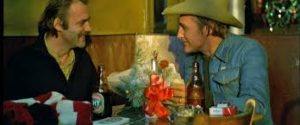
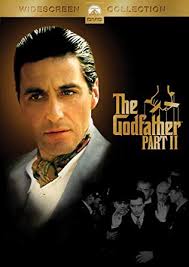

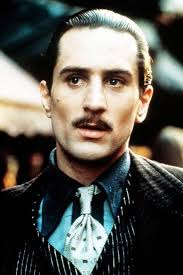
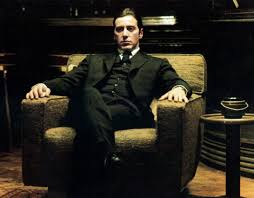
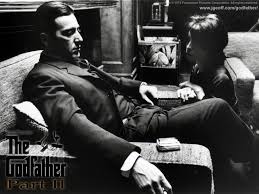 clearly (eportfolios). An example of this, along with angle choice is when Connie, Michael’s sister, is begging him to forgive their other brother Fredo. While the camera is on Connie it’s kept at a somewhat high angle to give the sense of vulnerability on Connie’s part. When the camera was on Michael it was filmed directly at eye level. This really emphasized the fact that Michael was above Connie both physically and in terms of power.
clearly (eportfolios). An example of this, along with angle choice is when Connie, Michael’s sister, is begging him to forgive their other brother Fredo. While the camera is on Connie it’s kept at a somewhat high angle to give the sense of vulnerability on Connie’s part. When the camera was on Michael it was filmed directly at eye level. This really emphasized the fact that Michael was above Connie both physically and in terms of power.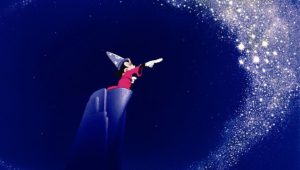

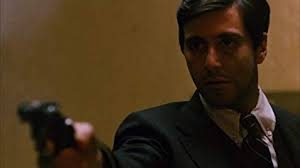
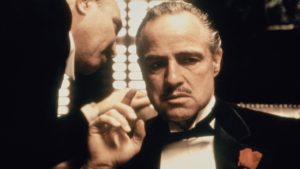
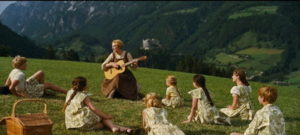
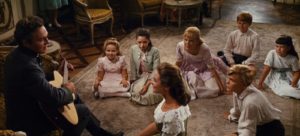
 Aguirre, the Wrath of God is a West German-Mexican-Peruvian historical drama. It was directed by Werner Herzog, a German director, in the year 1972. The story takes place in 16th-century Peru. In the beginning the camera pans over a beautiful view of the Andes mountains. On those mountains was a large group of Spanish conquistadors on their mission to find the mythical city El Dorado. The travelers believed that El Dorado was a city with massive amounts of gold and that they could conquer it. After some time the men decided that they would create a group of 40 men that would go off on their own expedition. They were given one week to find more information on El Dorado or the natives living in the jungle or that they would be presumed dead.
Aguirre, the Wrath of God is a West German-Mexican-Peruvian historical drama. It was directed by Werner Herzog, a German director, in the year 1972. The story takes place in 16th-century Peru. In the beginning the camera pans over a beautiful view of the Andes mountains. On those mountains was a large group of Spanish conquistadors on their mission to find the mythical city El Dorado. The travelers believed that El Dorado was a city with massive amounts of gold and that they could conquer it. After some time the men decided that they would create a group of 40 men that would go off on their own expedition. They were given one week to find more information on El Dorado or the natives living in the jungle or that they would be presumed dead.  Another interesting aspect to the production was the main actor Klaus Kinski. Herzog had “described his relationship with Kinski as two oppositional forces of Nature that when joined reach a critical mass” (Deep Focus Review). Kinski’s overbearing nature is actually what landed him the part. Before playing in Aguirre, the Wrath of God Kinski played a theatrical Jesus on tour. He would basically stand on a stage with a microphone and rant about how he was Jesus and he would insult the audience who would then insult him back. While he was on the set of Aguirre, the Wrath of God he wasn’t much better. It was reported that one night he was upset about some locals being “too noisy” in their tent so he took his rifle and fired off three shots into the tent. One man was shot in the hand and almost lost his finger but thankfully nobody was killed. Kinski didn’t get in much trouble for his actions, Herzog just took away his rifle. It might seem like a crazy light punishment but it seemed Herzog was a bit crazy as well. Kinski had finally threatened to leave the production altogether and Herzog responded by saying that “the film was more important than either of them—and that if Kinski tried to leave, Herzog would get his rifle and put eight of the nine rounds into Kinski’s head, and then save the last one for himself” (Deep Focus Review) so as you can see both the heads of the production were quite unstable.
Another interesting aspect to the production was the main actor Klaus Kinski. Herzog had “described his relationship with Kinski as two oppositional forces of Nature that when joined reach a critical mass” (Deep Focus Review). Kinski’s overbearing nature is actually what landed him the part. Before playing in Aguirre, the Wrath of God Kinski played a theatrical Jesus on tour. He would basically stand on a stage with a microphone and rant about how he was Jesus and he would insult the audience who would then insult him back. While he was on the set of Aguirre, the Wrath of God he wasn’t much better. It was reported that one night he was upset about some locals being “too noisy” in their tent so he took his rifle and fired off three shots into the tent. One man was shot in the hand and almost lost his finger but thankfully nobody was killed. Kinski didn’t get in much trouble for his actions, Herzog just took away his rifle. It might seem like a crazy light punishment but it seemed Herzog was a bit crazy as well. Kinski had finally threatened to leave the production altogether and Herzog responded by saying that “the film was more important than either of them—and that if Kinski tried to leave, Herzog would get his rifle and put eight of the nine rounds into Kinski’s head, and then save the last one for himself” (Deep Focus Review) so as you can see both the heads of the production were quite unstable. real explosions but when it came to things like blood it was very obviously bright red paint being splattered. One element focused on heavily in the film is noise. Almost the entire film there’s constant chattering of animals in the jungle or the rushing water in the rapids beneath them. Occasionally Herzog would cut all of the noise and make everything disturbingly silent. This was to make the viewers uncomfortable, like the characters were in the movie, because it always followed with a wild attack from the cannibalistic natives hiding in the jungle.
real explosions but when it came to things like blood it was very obviously bright red paint being splattered. One element focused on heavily in the film is noise. Almost the entire film there’s constant chattering of animals in the jungle or the rushing water in the rapids beneath them. Occasionally Herzog would cut all of the noise and make everything disturbingly silent. This was to make the viewers uncomfortable, like the characters were in the movie, because it always followed with a wild attack from the cannibalistic natives hiding in the jungle. 